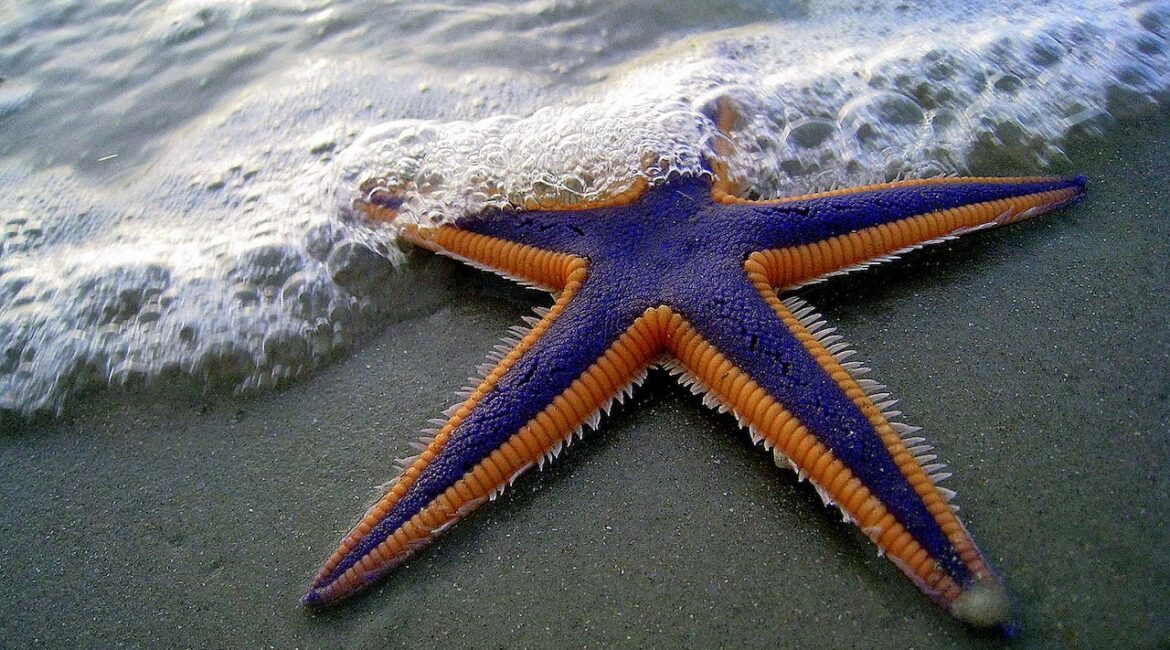Asexual reproduction is a unique and fascinating method of procreation, where an organism can reproduce and create offspring without the fusion of gametes (sperm and egg cells). This form of reproduction, though not as common as sexual reproduction in the animal kingdom, plays a critical role in ensuring the survival of certain species under specific conditions.
Komodo dragons, the largest living lizards on Earth, are known for their dominating presence and venomous bite. However, another intriguing aspect of their biology is their ability to reproduce asexually through a process called parthenogenesis. In situations where male counterparts are absent, female Komodo dragons can lay eggs that develop into healthy offspring without fertilization. This remarkable ability allows them to populate isolated areas where they might be the sole representative of their species.
The vastness of the ocean holds countless enigmas, one of which is the ability of the hammerhead sharks to reproduce asexually. Researchers were taken aback when they discovered that female hammerhead sharks could give birth without mating. Like the Komodo dragon, they employ parthenogenesis, where the egg cell develops into a new individual without being fertilized by a sperm cell. This capability can be particularly advantageous in environments where mates are scarce.
Dwelling beneath the soil are the Brahminy blind snakes, another species that can reproduce without mating. These snakes are all-female and reproduce exclusively through parthenogenesis. Their offspring are genetically identical to their mothers, making them natural clones. This mode of reproduction ensures their survival, especially since they live in isolated and specialized habitats.
Beyond the examples mentioned above, numerous other creatures, such as water fleas, certain bees, scorpions, wasps, and even some birds, possess the intriguing ability to reproduce asexually. Whether it’s through parthenogenesis, budding, or fission, these organisms have developed reproductive strategies to adapt to their environments and increase their chances of survival.
Asexual reproduction allows various species to thrive in diverse environments without relying on a mate. Here’s a list of animals that reproduce asexually, each showcasing unique characteristics and methods:
Whiptail Lizards
Found in North and Central America, some species of Whiptail lizards are entirely female. They reproduce through parthenogenesis, where an egg develops without fertilization. Remarkably, these lizards still engage in mating behaviors, where one female simulates the male role, possibly stimulating egg production. Though many species of Whiptail lizards reproduce asexually, their distribution remains robust. Studies indicate that parthenogenetic species (those reproducing asexually from unfertilized eggs) of Whiptail lizards can be found in 45% of their North American habitats, showcasing their resilience and adaptability.
New Mexico Whiptail
A distinct species of Whiptail lizard, the New Mexico Whiptail, is the result of hybridization between two sexually reproducing species. However, the hybrid species itself reproduces asexually, leading to a population entirely of females.
- Aphids
These tiny insects are notorious among gardeners. Female aphids can reproduce both sexually and asexually. During warmer months, they give birth to live offspring without mating, ensuring rapid population growth. However, when winter approaches, they produce both male and female offspring that mate and lay eggs. Aphids can reproduce rapidly through asexual reproduction. During their asexual phase, a single female aphid can produce up to 12 offspring per day. This means in ideal conditions, potentially thousands of new aphids could emerge from just one aphid in under a month, making them formidable pests for gardeners and farmers. - Stick Insects
Stick insects, known for their remarkable camouflage, can reproduce both sexually and asexually, depending on environmental conditions. When males are scarce, females use parthenogenesis to produce viable eggs. Some stick insect populations display as high as 99% asexual reproduction. This prevalence of asexual reproduction makes them a focal point in evolutionary biology, as scientists seek to understand the reasons and consequences behind this reproductive choice. - Sea Stars (Starfish)
Many sea stars can regenerate lost body parts, and some species take this ability further. If a sea star is split, some species can regrow into two separate individuals, effectively reproducing asexually. The ability of starfish to regenerate lost limbs and reproduce asexually through fission is remarkable. Depending on the species and environmental conditions, a sea star can regenerate a lost arm in as little as several weeks to months. In some species, a lost arm may turn into a new starfish entirely. - Water Fleas (Daphnia)
These small crustaceans reproduce asexually under favorable conditions, producing genetically identical offspring. However, when the environment becomes stressful, they switch to sexual reproduction to increase genetic diversity. - Coral Polyps
Many corals reproduce through budding. An offshoot grows from an adult polyp and eventually separates, becoming an independent individual. This form of asexual reproduction contributes significantly to the formation of coral reefs. Corals, which predominantly reproduce asexually, cover about 0.2% of the ocean floor, but they support approximately 25% of marine species. Coral reefs’ biodiversity hotspots provide shelter, breeding grounds, and feeding areas for numerous marine organisms, emphasizing the significant role of asexual reproduction in marine ecosystem health. - Hydra
These tiny freshwater creatures reproduce through budding. An outgrowth forms on the parent hydra’s body, developing into a new individual. Once mature, the new hydra detaches and lives independently. - Planarians (Flatworms)
These flatworms possess extraordinary regenerative capabilities. If a planarian is split into pieces, each segment can regenerate into a new individual, displaying a fascinating example of asexual reproduction. - Sea Anemones
Much like their coral cousins, sea anemones can reproduce asexually through budding, fission (where the organism splits into two), or pedal laceration (where bits of the base tear off and form new anemones).
Evolutionary Advantages and Disadvantages of Asexual Reproduction
Asexual reproduction, though not as common as its sexual counterpart, offers certain species specific advantages that aid their survival. One clear benefit is the rapid rate of reproduction. Species that reproduce asexually can quickly colonize an area, maximizing their presence before predators or competitors arrive. However, there are downsides to this reproductive strategy. Genetic diversity is limited, making populations vulnerable to diseases or environmental changes that they haven’t evolved to cope with. Without genetic variation, the entire population might have the same susceptibility, potentially leading to rapid declines or even extinction under adverse conditions.
Asexual Reproduction vs. Sexual Reproduction
Both asexual and sexual reproduction have their respective merits and challenges. Asexual reproduction allows organisms to reproduce without a mate, which can be especially advantageous in isolated or harsh environments. This method is energy-efficient as it doesn’t require the finding and courting of mates. On the other hand, sexual reproduction, though energy-intensive, brings genetic diversity to the table. This diversity acts as a protective buffer, allowing populations to adapt to changing environments over time. Each offspring from sexual reproduction has a unique combination of genes, increasing the chances that some will thrive, even when conditions change.
Genetic Uniformity and Disease Susceptibility
A significant concern with asexual reproduction is the genetic uniformity it produces within populations. Since offspring are essentially clones of the parent, they share the same genetic strengths and weaknesses. While this can be beneficial in stable environments, it becomes a concern when a disease or parasite targets that specific genetic makeup. Entire populations can be wiped out if they all share the same vulnerability. History has shown that genetically uniform crops, for example, can be devastated by a single pest or disease.
Hybrid Species and Asexual Reproduction
Nature’s experimentation sometimes leads to hybrid species—organisms born from the union of two different species. While many hybrids, like the mule (a cross between a horse and donkey), are sterile, some plants and animals can reproduce asexually after hybridization. This ability can be vital for their survival, allowing them to reproduce even when they cannot find a mate from their exact hybrid lineage. Over time, successful hybrid species that reproduce asexually can establish themselves as unique entities in the ecological landscape.
Asexual reproduction offers an intriguing perspective on nature’s multifaceted strategies for ensuring the continuation of life. By allowing organisms to rapidly populate and dominate certain environments, asexual reproduction stands as an effective, albeit risky, method. The genetic uniformity resulting from this reproductive mode can be a double-edged sword. While it grants a united front against shared challenges, it leaves entire populations susceptible to unforeseen threats. As the world grapples with rapid environmental changes, understanding the nuances of asexual reproduction becomes essential for conservation and the broader appreciation of biodiversity. The world of asexual reproduction presents a tantalizing mixture of efficiency and vulnerability. While it bypasses the complexities and energy expenditures of sexual reproduction, it hinges on the stability of the environment for its success. The genetic sameness, although beneficial in a consistent setting, can spell doom in the face of unexpected adversities. As ecosystems evolve and climates shift, the resilience and adaptability of asexually reproducing organisms will be tested. Delving deeper into this reproductive strategy offers not just insights into evolutionary biology but also lessons on adaptability and survival in a dynamic world.
- A Chat with Nate and Mika, Christian Wedding Photographers - July 18, 2024
- Ultimate Guide To Playing Online Casinos - May 27, 2024
- Addiction Recovery Books Worth Reading - January 24, 2024







